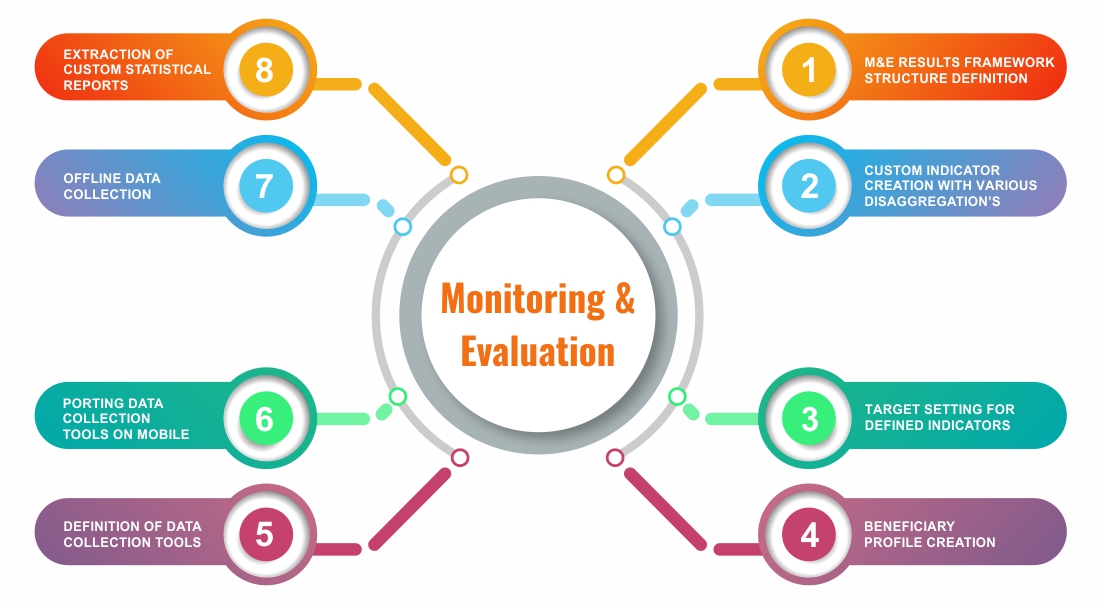| Project Name | Village Adaption Program |
|---|---|
| Project Objectives |
To create a 'Smart Village/Ward' that encompasses sustainable and inclusive development of all sections of its community to ensure all the basic amenities are provided to the people, letting them enjoy a superior standard of living.
|
| Focus Sector | Education, Health, Livelihood, Environment |
Client Brief
Our client focused on four major areas - Education, livelihood, health and environment!
1. Education
- Educating the students and empowering them to become independent by equipping them with knowledge and skill-based training programs. This helps them to apply their skill sets even in other areas of their lives, making them connect further with the society.
- To emphasize on integration and generalization of skills to help students draw connections between courses, coursework and other practical knowledge, thereby enhancing student engagement
- Help students understand their conditions and goals in life
2. Livelihood
- Livelihood is means of making a living. It encompasses people’s capabilities, assets, income and activities required to secure the necessities of life.
- Help each other to solve their problems.
- Self Help Groups (SHGs) promote small savings among their members and gives small loans to its members from its common fund to uplift their livelihood
- Digital literacy in information and communication technologies to find, evaluate, create and communicate information, requiring both cognitive and technical skills.
- Imparting soft skills, a personal attribute that supports situational awareness and enhances an individual's ability to get a job done.
- Career counselling to mentor/coach on issues related to an individual’s career.
- Career counsellors help individuals with the task of self-assessment and self-analysis.
3. Health
- Create a sanitation system that helps to capture, store, transport, treat and dispose or reuse human excreta and wastewater.
- The advantage of health camp is that we provide service at confessional rates.
- By providing the healthcare infrastructure, we provide accessible laboratory, training, and other support facilities.
- Ensure reliable supplies of pharmaceuticals and other materials, trained staff and professional training systems and mechanisms to distribute resources and expertise, which helps people to improve their livelihood.
- Agricultural produce processing tries to find a good balance between the need for food production and the preservation of the ecological system within the environment.
- Conservation and handling of agricultural produce and to make it usable as food, feed, fiber, fuel or industrial raw material.
4. Environment
- Using Drinking Water Purifier to protect them from diarrheal diseases caused by drinking impure water and poor sanitation.
- Planting trees to improve air quality by filtering out harmful dust and pollutants, such as ozone, carbon monoxide and sulfur dioxide.
- Trees reduce the amount of storm water runoff, which in turn reduces erosion and pollution in our waterways and may also reduce the effects of flooding.
Challenges in Village Adoption Program
- Lack of community participation
- Need to build local capacities
- Limitation of transportation
- Narrow perception towards CSR Initiatives
- Technology challenges associated with coverage and capacity
- Digital security
- Legislation and policies
- Lack of confidence or reluctance shown by citizens (lack of clarity on benefits)
- Funding and business models
- Interoperability
- Existing infrastructure for energy, water and transportation systems
- Insufficient Funds
- Inconsistent network connectivity
SMART Solutions for Smart Villages

Valliappa foundation strives to transform villages to Smart Villages by through quality education and healthcare, access to clean water, sanitation and nutrition, growth of productive enterprises to boost incomes, enhance security, establish gender equality and democratic engagement.
Benefits
| Phase 1 | Activities |
|---|---|
| Introduction to Social Empowerment |
Identifying the major players Motivation and Workshop on
Every week for different group and ensure that the community touches base with the experts to gain as much understanding as possible. |
| Awareness on the SHG and actual implementation | |
|
|
| Workshop on Agri - operation, production and promotion | |
| Phase II | Activities |
| Development of Smart Village Eco-System |
Social and political organizations; infrastructure, logistics and Information Technology, communication services that connect the companies and the states to the external economic and social environment and resources including Modification and continuation on program and expending the knowledge bank to include the followings
|
| Phase III | Activities |
| Focus on Factors that Impact Economic Empowerment |
|

| Sl. No. | Task | Scheduled Timeline |
| 1. | Frequency of visits | Often, Surprise visit |
| 2. | Collection of data | Regular |
| 3. | Monitoring of activity timeline | Regular, Surprise visit |
| 4. | Frequency of Submission of reports | Regular |
| 5. | Regular Feedback | Regular |
| 6. | Performance Tracking | Regular |
| 7. | Time Criteria | Regular |
| 8. | Periodicity | Regular |
| 9. | Output Processing | Often |
| 10. | Monthly / Weekly Review | Regular |
Conclusion
List of actions planned for sustainability:
- Diversification of Funding:
- Support from local governments
- Organize fundraising activities and events
- Set up endowments
- In-kind Support
- Create and develop partnership work
- Involvement of key stakeholders
- Regular evaluation of projects
- Building capacity of trustees, staff and volunteers
- Develop marketing and communication plan
This project is intended to collaborate with various institutes and industries to get the volunteers on-need basis, apart from the regular team of project officials.
© Copyright 2025 All Rights Reserved | Terms and Conditions | Privacy Policy | Careers

